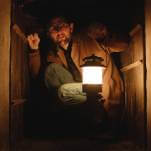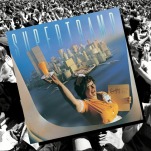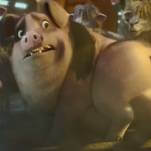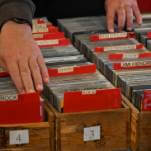Learn to hate Comic Sans with Wikipedia’s guide to typefaces
This week’s entry: Typeface
What it’s about: The concept of movable type—printing by using a separate block for each character, and using the combination of blocks to stamp ink onto paper or other material—is nearly a millennium old, having first been developed by Bi Sheng in Song Dynasty China around 1040. Bi’s type pieces were ceramic, and very labor intensive to both create and manipulate. In the 1200s, Koreans under the Goryeo Dynasty created the first metal movable type system—the metal was more durable, but the vast number of characters in the Chinese and Korean alphabets still made creating even a single typeset an enormous undertaking. In 1450, after the trade network built by Genghis Khan allowed Chinese inventions, including paper and the printing press, to reach Europe, Johannes Gutenberg invented a movable type system in which he could cast type pieces from molds. The much smaller European alphabets meant it was easy enough to make multiple versions of each letter, with full alphabets in different styles and sizes. The different styles were called typefaces; the sizes within each typeface were called fonts, although nowadays the two terms are used more or less interchangeably.
Strangest fact: Typography has changed far more in the last 65 years than the previous 650. As late as the 1880s, printers were still casting blocks of type from lead (sometimes carving type blocks from wood), much as Gutenberg had done, and Goryeo-era Koreans had before him. In the 1890s, the invention of the Linotype machine sped up the casting process, as it made it easy for printers to cast entire lines of type at once, but printers were still using the same basic Goryeo concept of metal blocks of type, stamped with ink. It wasn’t until the 1950s that typesetting took a step forward with a system called phototypesetting, in which light was projected through a film negative of each character and projected onto photographic paper. This method allowed type to be easily scaled to any desired font size for the first time. The 1970s saw the very first digital typesetters, but the printing industry used these alongside phototypesetters, linotype, and old-fashioned blocks of type. It wasn’t until computers became widespread in the 1980s that digital type began to make every previous technology obsolete.









![Rob Reiner's son booked for murder amid homicide investigation [Updated]](https://img.pastemagazine.com/wp-content/avuploads/2025/12/15131025/MixCollage-15-Dec-2025-01-10-PM-9121.jpg)

























![HBO teases new Euphoria, Larry David, and much more in 2026 sizzle reel [Updated]](https://img.pastemagazine.com/wp-content/avuploads/2025/12/12100344/MixCollage-12-Dec-2025-09-56-AM-9137.jpg)




